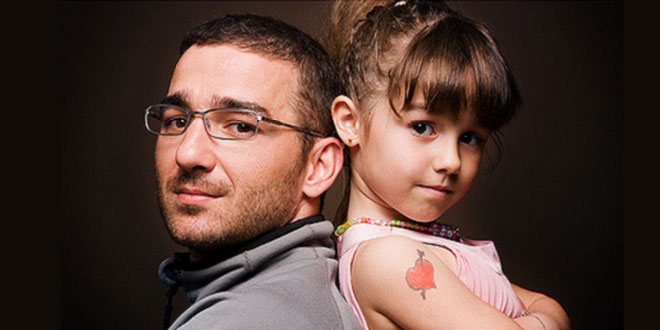While I was working to develop self-grooming in Hilda, at a very early developmental stage, I used to pick her up and hold her next to me in front of the mirror in my office. She was so little at five years old, weighing only twenty-eight pounds, I could easily hold her with my left arm.
It was winter cold outside, and we had both been wearing hats on our walk from the nursery school to the building where my office was. When we took our hats off, our hair was full of static electricity. As I lifted her up to look at ourselves in the mirror, I could see our hair needed combing. Spontaneously, I reached for a comb from my purse and began combing my hair. I then asked Hilda if she wanted her hair combed. She nodded a yes.
At first I began to comb her hair, but then I comb her own hair. Then I invited her to comb mine.
I had done a simple act of bridging her to a new place of self-grooming. She was repeating my actions, combing her hair, then mine.
As she was learning grooming, she was also relating to me as part of the larger world. Being held in my arms, she could physically feel the closeness of our relationship, and she could also see it by looking at our faces close together side by side in the mirror. Thus, another instance bridging was happening.
Both these steps were tremendous milestones for Hilda, since she was known to be an untouchable and unrelating child. Her willingness to let me touch her and have her touch me was really an act of mutual investment.
This bridging would come in time. But for a child not used to responding at all, she had done well. The combing provided a focus that relieved her from directly confronting her fear of the physical closeness we were sharing.
The combing had a very special bridging quality. The fact it was my comb and not a child’s comb or a toy added a special note of intimacy. I had to reach into my purse to get the comb. That comb was a piece of my intimate life, my personal grooming equipment. And I shared it with her.
Children at the school with whom I shared lunch also offered me an opportunity of investing something of myself. With Sharon in particular, part of our regular session was eating lunch together. In fact, with this 14-year-old girl I built entire therapy sessions around sharing lunch. She attended a school for retarded and emotionally distributed children in the building next door. It seemed we needed some structure for our work together, because at fourteen she considered herself too old for play therapy. Her teachers reported a lot of resistance in her to academic subjects, so I didn’t want to approach her directly through school work. Eating seemed to provide a time, a framework, and an activity we could comfortably share.
I brought things in my lunch like cookies and fruit which I intended to share with her. “These bananas looked really good.” I might say to Sharon, “ and I thought we might enjoy eating a banana together today,” or “ My daughters made these cookies last night. I thought you’d like them, so I brought some for us.”
The cookies were special because they provided bridges for Sharon to a number of places in the loving world: to my children, because they had made the cookies; to me, because I thought of her when I brought them; and to our relationship, because we both liked them and shared them. It was also a personal investment, because I felt free to brings things my children made to share with her; it was almost like sharing my children with her.
 Kids Portal For Parents India Kids Network
Kids Portal For Parents India Kids Network







